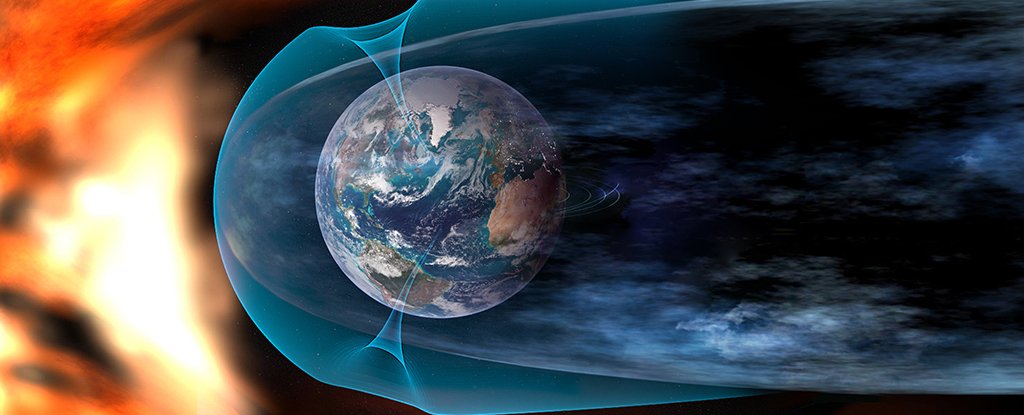
Evidence of water in the shadows of craters or trapped in glassy beads like microscopic snow globes recently revealed that the moon’s surface is far less dried out than we ever imagined.
Where this ice water veneer came from is a mystery that astronomers are currently trying to solve. A surprising possibility that emerges is an elemental rain from our own atmosphere, provided by the Earth’s magnetic field.
Water is not exactly a rare substance in space. In suitable places to hide, it can slosh around asteroids, cover comets, and even cling dangerously to the darkness of Mercury’s craters.
It makes sense that some of it will splash on the moon every now and then. But with the scorching heat of the sun and the lack of protection from the vacuum of space, it won’t be long.
To account for the surprising amount of moisture found on the lunar surface, researchers have proposed a more dynamic form of production – a constant ‘rain’ of protons driven by the solar wind. These hydrogen ions in the dust and rocks of the moon break into mineral oxides, tear chemical bonds apart, and form a loose, temporary alliance with the oxygen.
It’s a solid hypothesis, one that would be boosted by observations of the more exposed (and loosely bound) water molecules that quickly succumb to the vacuum of space when the moon is sheltered from solar winds.
Our home planet happens to be fairly well protected from the constant breeze of ions blown from the sun, thanks to a bubble of magnetism surrounding it. This force field not only surrounds us, it is blown into a teardrop shape by the solar attack.
Every month, the moon passes through this magnetosphere for a few days a month and receives a short break from the proton shower from the sun.
An international team of researchers recently used plasma and magnetic field instruments on Japan’s Kaguya orbiter to determine this precise timing in the moon’s orbit. Spectral data from Chandrayaan-1’s Moon Mineralogy Mapper (M3) was then used to map the distribution of water across the lunar surface at the highest latitudes.
The results were not quite what anyone expected.
In short, nothing happened. The time series of the moon’s watery signature revealed no noticeable difference in the three to five days hidden from the sun’s winds.
These results can mean a number of things. One is that the entire solar wind hypothesis is a failure, and other reservoirs are responsible for replenishing the moon’s surface water.
But another intriguing possibility that we don’t have to abandon the idea of the solar wind for is that Earth’s magnetic field just picks up where the sun stops.
Previous research has suggested that the plasma platelet associated with our planet’s magnetosphere could release about the same amount of hydrogen ions as the solar wind, especially to the lunar poles.
It doesn’t all come with the same amount of punch, admittedly, but the researchers hypothesize that even the occasional heavily impacting hydrogen ion could potentially create more than its fair share of water. And lower energy protons can be more easily held in place, making them less likely to disintegrate in the moments after they are formed.
There is also every possibility that oxygen from the upper reaches of the atmosphere above our poles will be transported through the vast void to collide with the moon, especially during periods of increased geomagnetic activity.
If this all sounds rather speculative, it’s because it is. At the moment we only have a rather surprising map of water that does not quite correspond to the favorite models.
But it points in some exciting new directions for the emerging region of the moon’s hydrodynamics. Since the researchers only mapped the water distribution at higher latitudes, it’s worth looking closer to the equator for the predicted losses in the future.
On a practical front, we might one day have to rely heavily on a fresh supply of lunar crust for fuel and sustenance, should the moon become a springboard for space exploration.
If nothing else, we’re slowly accumulating an understanding of a water cycle in space that helps us better understand the connections between our planet and its only natural satellite.
This research is published in the Astrophysical Journal Letters.